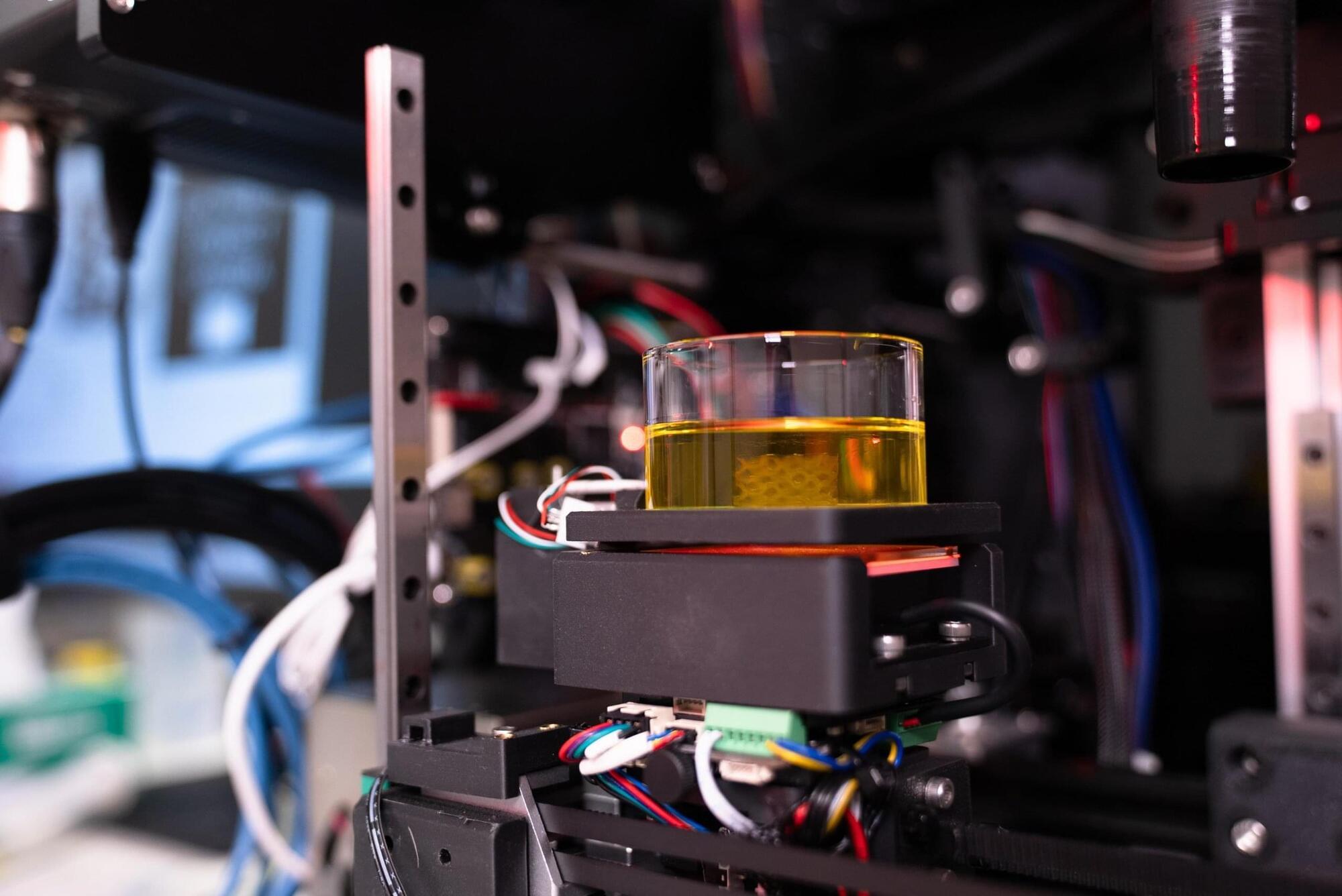Discover the groundbreaking advancements in robotics as Annie Jacobsen and Joe Rogan discuss a startling innovation: a robot made from living human skin. This fascinating creation not only smiles but raises ethical questions about the future of artificial humans. How close are we to creating a fully artificial person? Join the conversation about the implications of these technologies, especially in countries with different regulations. Don’t miss this eye-opening discussion!
Get the latest international news and world events from around the world.
Living robot skin
In a scientific breakthrough, Japanese scientists have found a way to attach artificially created living skin to robot faces for more realistic smiles and facial expressions.
#japan #robots #wion.
About Channel:
WION The World is One News examines global issues with in-depth analysis. We provide much more than the news of the day. Our aim is to empower people to explore their world. With our Global headquarters in New Delhi, we bring you news on the hour, by the hour. We deliver information that is not biased. We are journalists who are neutral to the core and non-partisan when it comes to world politics. People are tired of biased reportage and we stand for a globalized united world. So for us, the World is truly One.
Please keep discussions on this channel clean and respectful and refrain from using racist or sexist slurs and personal insults.
Check out our website: http://www.wionews.com.
Experimental Evidence No One Expected! Is Human Consciousness Quantum After All?
Get a Wonderful Person Tee: https://teespring.com/stores/whatdamathMore cool designs are on Amazon: https://amzn.to/3QFIrFXAlternatively, PayPal donations ca…
Skyhooks, Rotovators & Space Ladders: Lifting Humanity To The Stars Without Rockets
Discover the groundbreaking physics behind skyhooks, rotovators, and space ladders, and how they could revolutionize space travel in the near future.
Watch my exclusive video The End of Science https://nebula.tv/videos/isaacarthur–…
Get Nebula using my link for 40% off an annual subscription: https://go.nebula.tv/isaacarthur.
Get a Lifetime Membership to Nebula for only $300: https://go.nebula.tv/lifetime?ref=isa…
Use the link gift.nebula.tv/isaacarthur to give a year of Nebula to a friend for just $30.
Visit our Website: http://www.isaacarthur.net.
Join Nebula: https://go.nebula.tv/isaacarthur.
Support us on Patreon: / isaacarthur.
Support us on Subscribestar: https://www.subscribestar.com/isaac-a…
Facebook Group: / 1583992725237264
Reddit: / isaacarthur.
Twitter: / isaac_a_arthur on Twitter and RT our future content.
SFIA Discord Server: / discord.
Credits:
Skyhooks, Rotovators & Space Ladders.
Episode 488b; March 2, 2025
Written, Produced & Narrated by: Isaac Arthur.
Graphics: Jarred Eagley, Katie Byrne, Phil Swan, Sergio Botero.
Select imagery/video supplied by Getty Images.
Music Courtesy of Epidemic Sound http://epidemicsound.com/creator.
Phase Shift, \

Chinese Scientists Overcome Key Barrier to Scalable Photonic Quantum Computing
The researchers indicate that several challenges remain. The current system operates at cryogenic temperatures, which limits practical applications. While photons themselves can function at room temperature, the quantum dot requires cooling to maintain stability. Researchers are exploring alternative materials and designs that could allow operation at higher temperatures.
Additionally, the experiment used a single quantum dot, which is not easily scalable to large numbers of qubits needed for universal quantum computing. Future work will need to integrate multiple quantum dots or alternative photon sources that can be mass-produced with high consistency.
Another limitation is the reliance on superconducting detectors with an efficiency of 79%. If detection efficiency is improved beyond 93.7%, the overall system efficiency could surpass the required threshold even further. Advancements in superconducting nanowire technology suggest this is feasible in the near future.

Revolutionary 3D Bioprinter Creates Human Tissue Structures in Seconds
Biomedical engineers at the University of Melbourne have developed a 3D bioprinting system capable of creating structures that closely replicate various human tissues, ranging from soft brain tissue to more rigid materials like cartilage and bone.
This innovative technology provides cancer researchers with a powerful tool for replicating specific organs and tissues, enhancing their ability to predict drug responses and develop new treatments. By offering a more accurate and ethical approach to drug discovery, it also has the potential to reduce reliance on animal testing.
Head of the Collins BioMicrosystems Laboratory at the University of Melbourne, Associate Professor David Collins said: In addition to drastically improving print speed, our approach enables a degree of cell positioning within printed tissues. Incorrect cell positioning is a big reason most 3D bioprinters fail to produce structures that accurately represent human tissue.

LIVE NOW! Blue Ghost’s Historic Moon Landing: Science, Innovation & The Future of Space
Firefly Aerospace’s Blue Ghost lunar lander is set to make history as it targets a March 2 lunar landing near Mare Crisium, a vast plain on the Moon’s near side. Carrying NASA’s cutting-edge science and technology, this mission marks another crucial step in humanity’s return to the Moon under the Artemis program. As part of NASA’s CLPS initiative, Blue Ghost’s success will pave the way for future lunar and Martian exploration.
Mission Overview: Blue Ghost’s Lunar Delivery.
Launched aboard a SpaceX Falcon 9 on January 15, Blue Ghost carries 10 NASA payloads designed to investigate the Moon’s environment and test new technologies for future missions. These experiments will provide critical data on lunar surface conditions, radiation levels, thermal properties, and advanced landing systems—all essential for upcoming crewed missions.
Live Landing Coverage & Key Moments.
The landing event, hosted by NASA and Firefly Aerospace, will be streamed live on NASA+ and Firefly’s YouTube channel starting at 2:20 a.m. EST on March 2, roughly 75 minutes before touchdown. The stream will cover the final descent, landing confirmation, and initial mission updates. A post-landing press conference will follow, where experts will discuss the mission’s success and upcoming science operations on the lunar surface.
Why This Mission Matters.
Blue Ghost is a key part of NASA’s Commercial Lunar Payload Services (CLPS) program, which enables private companies to deliver science and technology to the Moon. These robotic landings will support Artemis astronauts, testing vital systems for future long-term lunar habitation and, ultimately, crewed missions to Mars. NASA’s collaboration with companies like Firefly Aerospace ensures rapid progress in space exploration, resource utilization, and sustainable lunar development.
The Future of Lunar Exploration.
With CLPS contracts valued at $2.6 billion through 2028, NASA is committed to building a strong commercial space ecosystem. The $101.5 million contract awarded to Firefly for this mission underscores the agency’s dedication to fostering innovative, cost-effective lunar transportation solutions. Future missions will refine navigation, in-situ resource utilization, and long-duration surface operations, bringing us closer to a permanent human presence beyond Earth.
🚀 Subscribe to Space Googlevesaire! 🚀

Breakthrough Discovery: Scientists Identify Key Protein Linked to Parkinson’s Onset
Scientists at the La Jolla Institute for Immunology (LJI) have identified a potential new target for Parkinson’s disease treatment. Their research highlights the role of a specific brain cell protein in triggering the disease and may explain why Parkinson’s is more prevalent in men.
Recent studies from LJI suggest that autoimmunity plays a key role in Parkinson’s onset. Their latest findings, published in The Journal of Clinical Investigation, reveal that the protein PINK1 may label certain brain cells for attack by the immune system, contributing to disease progression.
“This research allows us to better understand the role of the immune system in Parkinson’s disease,” says LJI Professor Alessandro Sette, Dr. Biol. Sci., senior author of the recent study.

Reality is not revealed by quantum mechanics
“According to Hooke, microscopes, like telescopes, put us on the cusp of doing what philosophers from Antiquity onwards had always tried to do, namely, understand the fundamental nature of reality,” writes assistant professor in philosophy, Peter West.
The idea that we can discover the fundamental level of reality might be alluring, but it’s based on a faulty philosophy, not science, argues Peter West.
Tap to read more about his beliefs that reality is not revealed by quantum mechanics.
The craze with all things quantum is not just because of its inherent weirdness. It’s motivated by a reductionist impulse that has been animating science from Robert Hooke in the 17th century to Stephen Hawking in the 21st. The idea that we can discover the fundamental level of reality might be alluring, but it’s based on a faulty philosophy, not science, writes Peter West.
The idea that reality is reducible to its most fundamental parts still animates much of science, particularly physics and philosophy. The craze with all things quantum is partly animated by this thought: understand quantum mechanics, the way that matter behaves at the smallest level known to us, and you’ve understood everything. But this philosophical impulse — because contrary to belief, it’s not scientific — that the microscopic holds the key to the secrets of the universe, is much older than quantum mechanics. It goes back at least all the way to the 17th century and the invention of the microscope. Some of the best critiques of reductionism also date from the same century: Size doesn’t matter, the very small is just one realm of reality among many, with no special privilege.
Sign up to get exclusive access.